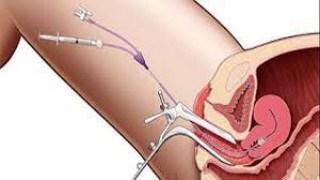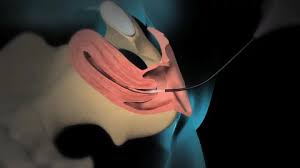Port closure by veress needle
Add to
Share
254 views
Report
1 month ago
Description
In laparoscopic surgery, creating access ports is essential to introduce instruments into the abdominal cavity. After surgery, proper closure of these ports is critical to prevent complications such as hernia, bleeding, or infection. One effective technique for closing laparoscopic ports is the Veress needle-assisted closure method. What is a Veress Needle? The Veress needle is a thin, spring-loaded needle traditionally used to create pneumoperitoneum (inflate the abdomen with gas) at the start of laparoscopy. Interestingly, this same needle can be utilized to facilitate safe closure of port sites, especially for larger ports (10 mm or more), minimizing tissue trauma. Why Port Closure is Important: Prevents incisional hernia, a common late complication of laparoscopic surgery. Reduces bleeding and tissue entrapment. Ensures faster healing and better cosmetic outcomes. Steps for Port Closure Using a Veress Needle: Identify the Port Site: After removing instruments, locate the port requiring closure. Larger ports (>10 mm) are typically the focus. Insert the Veress Needle: The Veress needle is inserted through the abdominal wall adjacent to the port site. It is directed in a way that it passes between the fascia and the skin but does not penetrate the peritoneal cavity. Guide the Suture: Using the needle as a guide, a non-absorbable or delayed absorbable suture is threaded through the fascia. The suture is looped beneath the fascial layer to secure closure of the defect. Tie the Fascia: Carefully withdraw the Veress needle, leaving the suture in place. Tie the suture securely to close the fascial defect, ensuring no tension or tissue entrapment. Skin Closure: Finally, close the skin with absorbable sutures or adhesive strips, depending on surgeon preference. Advantages of Using Veress Needle for Port Closure: Minimally invasive: avoids large fascial dissection. Safe: reduces the risk of inadvertent bowel or vessel injury. Efficient: suitable for single or multiple port closures. Cosmetic: minimizes scarring and tissue trauma. Conclusion: Port closure using a Veress needle is a safe, effective, and minimally invasive technique for securing laparoscopic port sites. Proper fascial closure is essential to prevent complications such as hernia or bleeding, and the Veress needle method provides a reliable way to achieve this, especially in larger port sites. Surgeons skilled in this technique can ensure faster recovery, fewer complications, and better patient outcomes.
Similar Videos






